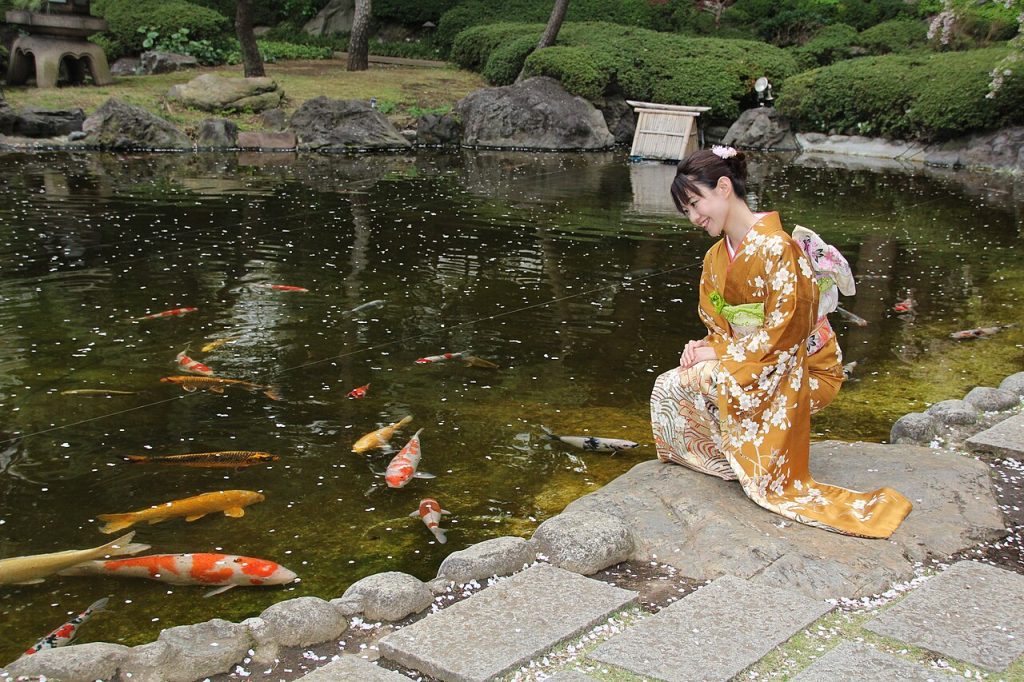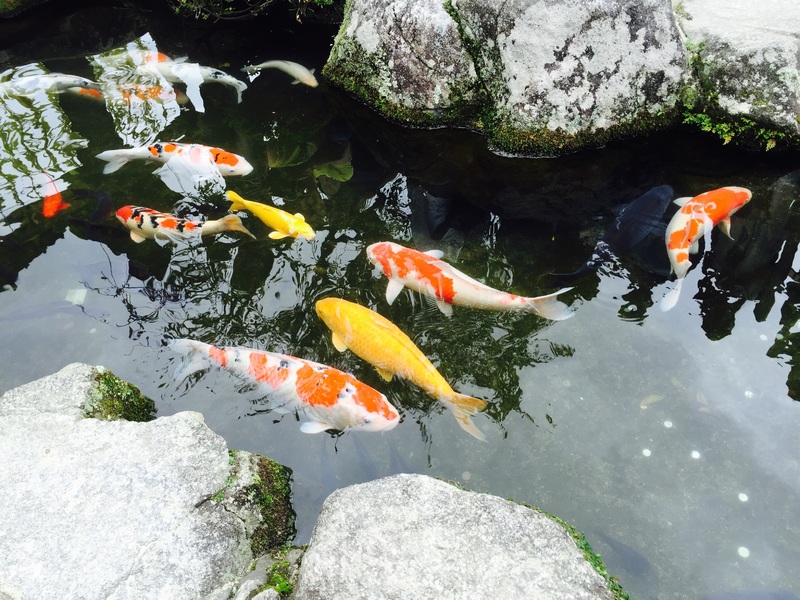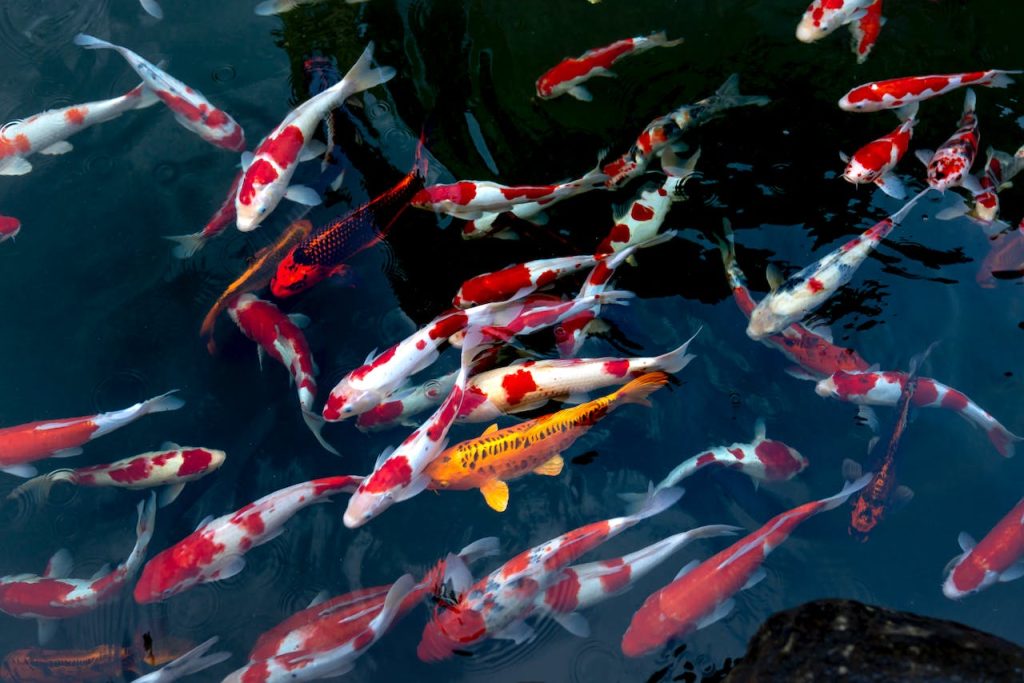For many enthusiasts, koi fish represent more than just an ornamental addition to a pond; they are a passion, a splash of nature’s beauty right in one’s backyard.
But when signs of fish skin problems, such as peeling and shedding, come to the surface, it’s an immediate call to action to preserve koi fish health. These symptoms often point to underlying koi fish diseases that can spread and affect the tranquility of an aquatic haven.
Understanding koi fish skin conditions is pivotal in finding skin-peeling remedies for koi fish. This knowledge equips pond owners to address health issues promptly and competently.
Aspects such as proper koi fish care and maintenance can prevent skin issues and ensure the long-term well-being of these colorful residents. With accurate diagnosis and effective intervention, the vitality of the affected koi can be restored.
Key Takeaways
- Identifying the cause of skin peeling is critical to treating koi fish diseases effectively.
- Water quality is paramount in koi fish care and preventing fish skin problems.
- Immediate quarantine and appropriate treatment are necessary for koi fish skin issues.
- Consistent pond maintenance is a staple in koi fish maintenance and disease prevention.
- Treatment options such as Oxylic acid can address bacterial infections that cause skin peeling.
- An in-depth understanding of koi fish skin conditions can lead to better management practices.
Diagnosing Skin Peeling in Koi Fish

When koi fish display signs of skin peeling, prompt and accurate diagnosis is vital to initiate effective treatment.
Skin peeling in koi fish can indicate several health issues and may arise from various causes of skin peeling.
Identifying the root cause is the first step toward applying remedies for koi fish skin peeling and ensuring the health of your aquatic pets.
Home Care Solutions for Koi Fish
Effective home care begins with vigilant monitoring and maintenance of pond conditions to prevent koi fish skin peeling. It is critical to maintain the pond water parameters within optimal ranges.
The temperature should be controlled between 65 and 75 degrees Fahrenheit, whereas the pH level should ideally stay within a neutral range to provide a stress-free habitat for koi.
Additionally, salinity should remain low, and the levels of harmful substances such as ammonia and nitrite should be kept close to zero using a reliable pond water test kit.
Upon initial signs of distress, such as unusual swimming behavior or visible sores, isolating the afflicted koi is beneficial for closer examination and to prevent potential spread to other fish in the pond.
For isolation and safe handling of the sensitive creatures, a koi sock or net is recommended. Treating the underlying causes of koi fish skin peeling, which frequently include bacterial infections or parasitic infestations, might require specialized treatments like Oxolinic acid.
Ensuring the proper ratios and doses of such treatment options is imperative to successful recovery. Alongside medications, adjustments in pond salinity can be an effective remedy, often requiring the introduction of pure, non-iodized salt into the pond ecosystem to support healing and help prevent future koi fish skin issues.
When to Seek Professional Help

While numerous issues can be resolved through diligent home care, certain conditions necessitate professional advice or intervention.
This is particularly pertinent when traditional home remedies for koi fish skin peeling are ineffective or when the koi’s condition deteriorates despite treatment.
In such circumstances, consulting with aquatic veterinarians or tapping into the knowledge of seasoned koi keepers on forums can provide additional insights into treating koi fish skin peeling.
Expert advice might involve fine-tuning water parameters even further, or it might lead to a discussion on common koi fish diseases and the most effective pharmaceutical interventions available to address them.
These professionals can offer specialized knowledge about koi care, including novel treatments and comprehensive plans designed to restore and maintain the health of these valuable ornamental pets.
Treatment and Recovery for Skin Peeling
The path to recovery often involves a dual approach: addressing the immediate issue with medications and therapies, followed by long-term koi care tips to maintain koi pond health and prevent recurring problems.
Medications and Therapies for Koi Fish

Beginning with acute care, targeted koi fish treatments can be instrumental in halting the progression of skin peeling. Among these, potassium permanganate solutions and prescribed ear drop medications have been reported by koi enthusiasts on various forums to offer relief and support healing.
Such treatments are more effective in ponds where water quality is closely managed to be conducive to koi fish health. The marine environment must boast stable conditions—ensuring the pH level, water temperature, and salinity are within the appropriate range for koi vitality.
In addition to chemical solutions, physical therapies like gentle salt dips have shown positive results in preventing koi fish skin peeling. These dips help cleanse the wounds, reduce infection, and encourage skin repair.
However, such treatments must be administered precisely to avoid over-medication, which can further stress the koi.
Long-Term Health Management of Koi Fish
After an immediate threat is addressed, a strategic shift toward long-term koi pond maintenance begins. Regular monitoring of the pond’s ecosystem is essential to preempt potential fish skin issues. Assessment of water quality plays a pivotal role in this phase.
Keeping ammonia and nitrites low, regulating the pH, and maintaining the pond at a comfortable temperature for koi are all part of an ongoing care regimen.
Moreover, ensuring a stress-free environment contributes significantly to the health of koi. Such efforts include establishing a predator-free zone, providing ample space to prevent overcrowding, and offering a balanced diet that supports overall health.
By implementing these koi care tips, fish skin regeneration is optimized, and the likelihood of future koi fish skin problems is minimized.
Indeed, success stories across koi forums affirm the efficacy of diligent care, with numerous accounts of koi recovering from episodes of skin peeling.
It’s often shared amongst the community how establishing a strong routine for koi pond maintenance and care can lead to robust and resilient koi that bring joy and beauty to their keepers for years to come.
Additional Resources and Support
Aquatic enthusiasts embarking on the journey of koi fish keeping will discover that focusing on prevention is as crucial as addressing koi fish skin treatment.
By upholding water quality, monitoring nutritional intake, and managing stressors in the pond environment, one can significantly reduce the risk of koi fish skin peeling and other ailments.
Such proactive measures not only maintain healthy koi skin but also fortify the fish against potential infections, ensuring the ongoing vibrancy and health of the pond ecosystem.
Importance of Water Quality and Nutrition
Vigilant attention to pond chemistry is indispensable to secure the well-being of koi fish and thwart skin conditions.
Offering a diet low in carbohydrates and rich in essential nutrients aligns with preventing koi fish diseases. Assisting in this endeavor, resources like Koi-Bito open a treasure trove of expert advice on proper feeding regimes and water quality management, aiding in solidifying koi pond health.
Stress Management in Koi Fish
Koi fish disease prevention also hinges on minimizing stress within the aquatic habitat. Effective strategies include deterring predators, minimizing competition and aggression by avoiding overcrowding, and cultivating a stable environment free from erratic changes.
Koi enthusiasts can delve into the knowledgebase of forums to learn the best practices in creating such harmonious settings, safeguarding their koi from stress-induced skin shedding, and cultivating a serene and thriving koi pond.
With such robust support systems, individuals are well-equipped to care for their aquatic charges, upholding a standard of health and beauty within their koi populations.


